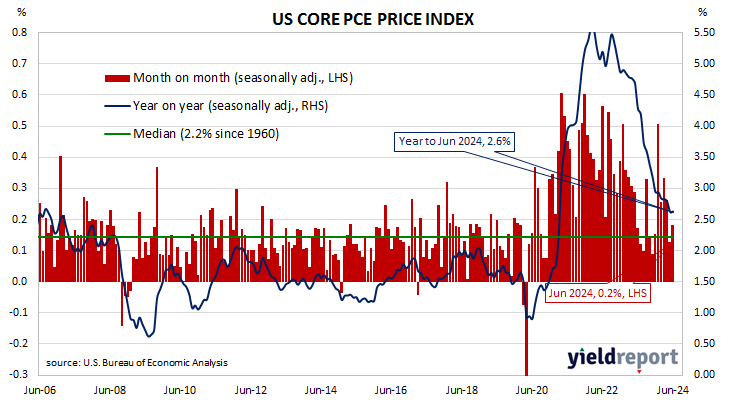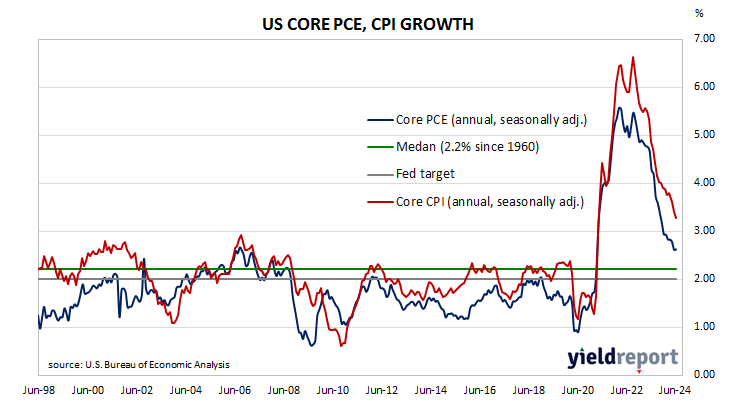Summary: US core PCE price index up 0.2% in June, in line with expectations; annual rate steady at 2.6%; Westpac: consistent with soft landing for US economy; Treasury yields fall; Fed rate-cut expectations firm;
One of the US Fed’s favoured measures of inflation is the change in the core personal consumption expenditures (PCE) price index. After hitting the Fed’s target at the time of 2.0% in mid-2018, the annual rate then hovered in a range between 1.8% and 2.0% before it eased back to a range between 1.5% and 1.8% through 2019. It then plummeted below 1.0% in April 2020 before rising back to around 1.5% in the September quarter of that year. It has since increased significantly and still remains above the Fed’s target even after recent declines.
The latest figures have now been published by the Bureau of Economic Analysis as part of the June personal income and expenditures report. Core PCE prices rose by 0.2% over the month, in line with expectations but up from May’s 0.1% increase. On a 12-month basis, the core PCE inflation rate remained unchanged at 2.6%.
“The outcomes are consistent with a soft landing; inflation is moderating toward the Fed’s 2% target, while the economy and spending continues to grow, albeit at a moderating pace,” said Westpac senior economist Pat Bustamante.
US Treasury bond yields fell moderately across the curve on the day. By the close of business, the 2-year Treasury bond yield had lost 4bps to 4.39%, the 10-year had shed 5bps to 4.19% while the 30-year yield finished 3bps lower at 4.45%.
In terms of US Fed policy, expectations of a lower federal funds rate in the next 12 months firmed, with at least five 25bp cuts currently factored in. At the close of business, contracts implied the effective federal funds rate would average 5.315% in August, 2bps less than the current spot rate, 5.21% in September and 4.92% in November. June 2025 contracts implied 4.03%, 130bps less than the current rate.
The core version of PCE strips out energy and food components, which are volatile from month to month, in an attempt to identify the prevailing trend. It is not the only measure of inflation used by the Fed; the Fed also tracks the Consumer Price Index (CPI) and the Producer Price Index (PPI) from the Department of Labor. However, it is the one measure which is most often referred to in FOMC minutes.



